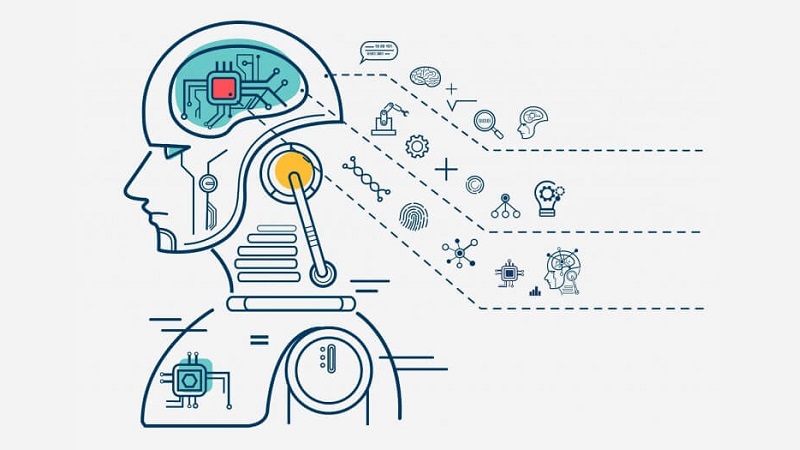Unlocking the Power of Machine Learning: A Beginner’s Guide

Machine learning (ML) has become a buzzword in today’s tech-driven world. From enhancing our daily lives to revolutionizing industries, machine learning is at the forefront of innovation. But what exactly is machine learning, and how can you get started with it? This beginner-friendly guide will walk you through the basics of machine learning, its applications, and the various ways you can learn it.
Also Read:- How Machine Learning is Changing Humanity for The Best: A Guide To Readiness
What is Machine Learning?
Machine learning is a subset of artificial intelligence (AI) that focuses on the development of algorithms that enable computers to learn from and make predictions based on data. Unlike traditional programming, where a computer is explicitly programmed to perform a task, machine learning allows the computer to learn from examples and improve its performance over time.
FAQ: What is meant by machine learning?
Machine learning refers to the process by which computers use algorithms to analyze data, learn from it, and make decisions or predictions without being explicitly programmed for each specific task.
Types of Machine Learning
Machine learning can be broadly classified into three types: supervised learning, unsupervised learning, and reinforcement learning.
- Supervised Learning: In supervised learning, the algorithm is trained on a labeled dataset. This means that each training example is paired with an output label. The algorithm learns to map inputs to the correct output based on the training data.
- Unsupervised Learning: Unsupervised learning involves training the algorithm on data without labeled responses. The algorithm tries to learn the patterns and structure from the data. Common applications include clustering and association tasks.
- Reinforcement Learning: In reinforcement learning, the algorithm learns by interacting with an environment. It receives feedback in the form of rewards or penalties and adjusts its actions accordingly to maximize the cumulative reward.
FAQ: What are 3 types of machine learning?
The three types of machine learning are supervised learning, unsupervised learning, and reinforcement learning.
Machine Learning vs. Artificial Intelligence
While machine learning and artificial intelligence are often used interchangeably, they are not the same. AI is a broader concept that encompasses any technique enabling computers to mimic human intelligence. Machine learning is a specific approach within AI that uses statistical methods to enable machines to learn from data.
FAQ: What is the difference between AI and machine learning?
AI is a broader concept that includes any technique to make computers mimic human intelligence. Machine learning is a subset of AI that focuses on the development of algorithms that learn from data.
How Machine Learning Works
The main idea of machine learning is to build models that can find patterns in data and make decisions or predictions based on those patterns. Here’s a simplified breakdown of the process:
- Data Collection: Gather data relevant to the problem you want to solve.
- Data Preparation: Clean and format the data for analysis.
- Model Training: Use the data to train a machine learning model.
- Model Evaluation: Test the model on new data to evaluate its performance.
- Deployment: Implement the model in a real-world setting where it can make predictions or decisions.
FAQ: What is the main idea of machine learning?
The main idea of machine learning is to develop models that can learn from data and make decisions or predictions without being explicitly programmed for specific tasks.
Machine Learning Algorithms
Several machine learning algorithms are commonly used to solve different types of problems. Some popular ones include:
- Linear Regression: Used for predicting a continuous variable.
- Logistic Regression: Used for binary classification problems.
- Decision Trees: Used for both classification and regression tasks.
- Random Forest: An ensemble method that improves accuracy by combining multiple decision trees.
- Support Vector Machines (SVM): Used for classification tasks.
- K-Nearest Neighbors (KNN): Used for classification and regression by analyzing the k-nearest data points.
- Neural Networks: Used for complex tasks like image and speech recognition.
Getting Started with Machine Learning
Machine Learning Tutorials
Online tutorials are a great way to start learning machine learning. Many platforms offer free and paid tutorials that cover various topics, from basic concepts to advanced techniques. Some popular resources include:
- Coursera: Offers courses from universities and colleges worldwide.
- edX: Provides a wide range of courses, including those from top universities.
- Khan Academy: Great for understanding the mathematical foundations of machine learning.
- YouTube: Numerous channels offer step-by-step tutorials on machine learning.
Machine Learning Courses
Enrolling in a machine learning course can provide a structured learning path and a deeper understanding of the subject. Some recommended courses include:
- Andrew Ng’s Machine Learning Course on Coursera: A comprehensive introduction to machine learning.
- Deep Learning Specialization on Coursera: Focuses on deep learning techniques.
- Machine Learning A-Z on Udemy: Covers a wide range of machine learning algorithms and their implementation.
Machine Learning for Kids
Introducing kids to machine learning can be a fun and educational experience. There are several tools and platforms designed to teach children the basics of machine learning in an engaging way:
- Scratch: A visual programming language that can be used to create machine learning projects.
- Teachable Machine: A Google project that allows kids to train simple machine learning models using images, sounds, and poses.
- AI for Kids: Various online resources and kits designed to teach kids about AI and machine learning.
Machine Learning Definition and Examples
To better understand machine learning, let’s look at some practical examples:
- Email Spam Filtering: Machine learning algorithms can classify emails as spam or not based on their content.
- Recommendation Systems: Online platforms like Netflix and Amazon use machine learning to recommend movies and products based on user behavior.
- Image Recognition: Applications like Google Photos use machine learning to identify objects and people in images.
- Speech Recognition: Virtual assistants like Siri and Alexa use machine learning to understand and respond to voice commands.
Conclusion
Machine learning is an exciting field with vast potential. Whether you’re a student, a professional looking to upskill, or a parent wanting to introduce your kids to the world of technology, there are numerous resources available to help you get started. By understanding the basics and exploring the various tutorials, courses, and practical applications, you can unlock the power of machine learning and be part of the technological revolution.
Happy learning!








